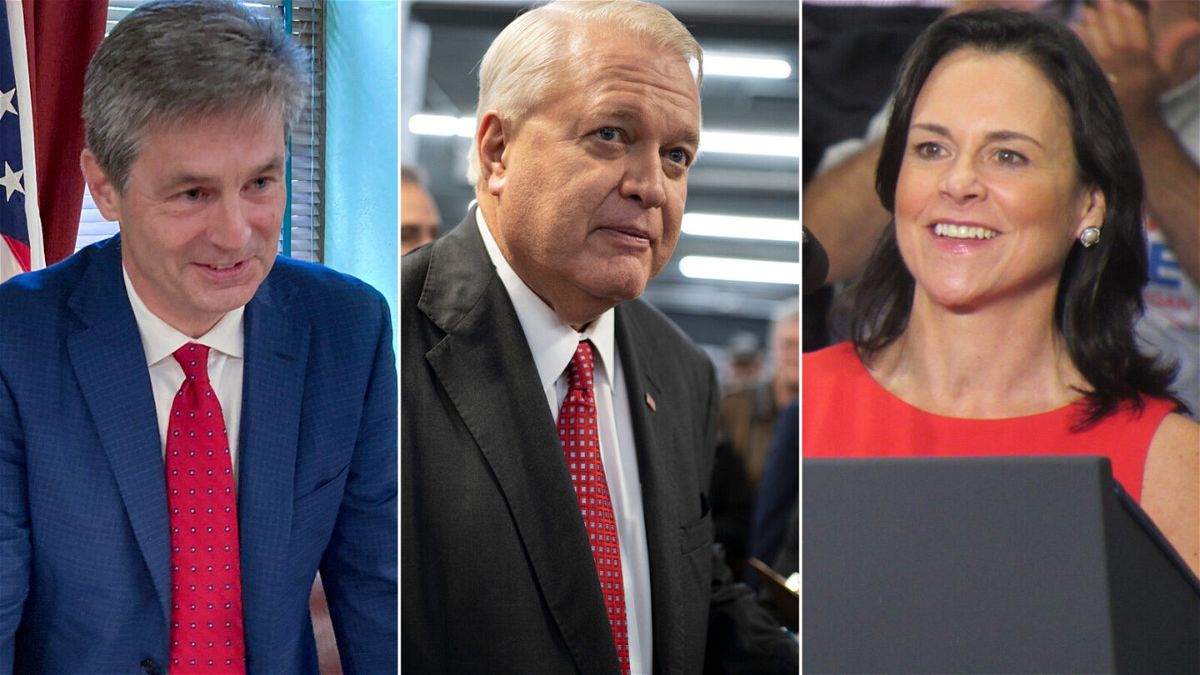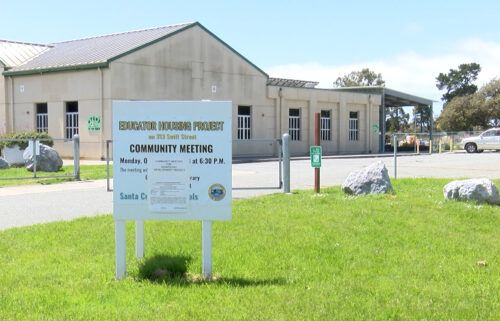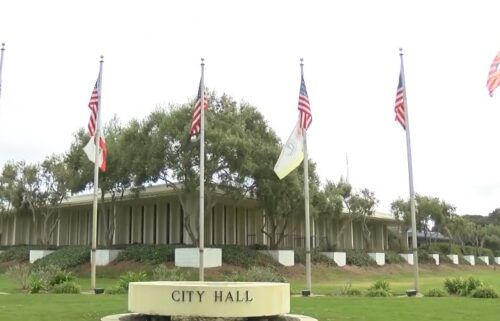Wealthy candidates pour millions into 2022 campaigns

From left
By David Wright and Eva McKend, CNN
Members of sports team families and business leaders are among those pouring their personal fortunes into campaigns for office in 2022, making an early impact on primary contests for key midterm races.
In Ohio alone, four self-funding candidates have already combined to contribute nearly $30 million to their US Senate campaigns.
Mike Gibbons, a Cleveland-based businessman who made his fortune in real estate and investment banking, has loaned his campaign over $11 million. Matt Dolan, a state senator whose family owns the Cleveland Guardians baseball team, has directly contributed about $8 million to his campaign, and loaned it $2.5 million more.
Bernie Moreno, a car dealer turned tech executive, loaned his campaign about $3.75 million before suspending his bid this month. And former state GOP chair Jane Timken, whose family owns a Canton-based steel company, has loaned her campaign about $3.5 million.
The flood of money has produced a deluge of advertising in the competitive Republican Senate primary in Ohio. Through the second week of February, Buckeye State voters had already seen over $15 million worth of TV ads. Nearly $10 million more has been reserved through the date of the primary, still months away on May 3.
And Ohio isn’t the only state where self-funding candidates are influencing key Senate primaries.
In Arizona, Republican Jim Lamon — whose energy company was purchased by Koch Industries last year — has loaned his campaign $8 million. In Pennsylvania, celebrity doctor Mehmet Oz has already loaned his campaign for the GOP nomination more than $5 million. As in Ohio, millions worth of TV ads have aired already in both states, driven in large part by the spending of these self-funding candidates.
Self-funding in 2022 is not a strictly partisan phenomenon. In Wisconsin, Democratic Senate hopeful Alex Lasry, whose family owns the Milwaukee Bucks NBA franchise, has loaned his campaign nearly $2.4 million. State Treasurer Sarah Godlewski, who is also seeking the Democratic Senate nod in Wisconsin, has invested almost $1.8 million into her bid.
Other candidates have turned to outside spending and wealthy benefactors to keep pace. J.D. Vance, a best-selling author also running for the Republican Senate nomination in Ohio, has loaned his campaign just $100,000. But a super PAC supporting his bid, Protect Ohio Values, received over $10 million last year from GOP megadonor Peter Thiel.
Several House candidates have contributed big sums to their campaigns this election cycle. In Florida, Democrat Sheila Cherfilus-McCormick, a home health care executive who won a special election for the 20th Congressional District last month, loaned her campaign nearly $6 million (and has repaid herself about $2 million of that total.) Cody Reynolds, a Democratic candidate for Oregon’s 6th district, reported loaning his campaign $2 million. And Elijah Norton, a Republican mounting a primary challenge to incumbent Rep. David Schweikert in Arizona, has loaned his campaign about $2 million as well.
Advertising advantage
The ability to pour millions directly into one’s own campaign is a significant advantage for these self-funding candidates. Candidate campaigns receive preferential TV advertising rates compared with outside groups like super PACs, which means the money goes further when it comes from a campaign versus an outside group.
“While money doesn’t buy outcomes, it certainly buys advertisements, and to the first consumer of those advertisements, they don’t know who’s paying for the ad,” said Sarah Bryner, a strategist at the watchdog group OpenSecrets.
The proliferation of self-funders can harm lesser-known candidates who aren’t independently wealthy from breaking through, Bryner added. Though these self-funders may not ultimately win their respective contests, they can blunt momentum for their rivals early on by crowding out the field.
Self-funding candidates also make the case that their wealth affords them political independence and that they aren’t reliant on special interests or megadonors who could influence their positions. Former President Donald Trump made this argument central to his presidential primary campaign in 2015.
“I’m using my own money. I’m not using the lobbyists. I’m not using donors. I don’t care. I’m really rich,” the former President said when he announced his White House bid. Trump ultimately contributed or loaned over $66 million to his 2016 campaign but contributed nothing to his 2020 reelection coffers.
Some high-profile failures
While self-funded campaigns enjoy some considerable advantages, they’ve had a mixed record at the polls. Michael Bloomberg spent over $1 billion on his campaign for the 2020 Democratic presidential nomination, blanketing national airwaves with advertising. But he failed to win a single state nominating contest. One of his opponents in that race, billionaire Tom Steyer, spent about $350 million, to similar results.
“They come in. They make a big splash, buy a lot of advertising. It’s all paid for by their own money. And it doesn’t really move the needle with the polling,” said Bryner.
More recently, Georgia GOP Sen. Kelly Loeffler loaned her 2020 campaign $23 million, but she was ultimately defeated in a special election runoff by the grassroots-funded effort of Democrat Raphael Warnock.
Whether self-funders win or lose, their ability to pour money into elections can have adverse effects for less wealthy candidates — crowding out contenders, driving up advertising costs, and raising the barrier to entry for those lacking millions of dollars to spend on politics.
But Democrat Mandela Barnes, Wisconsin’s lieutenant governor who is also running for Senate, said he doesn’t see the self-funders as a threat because his large grassroots coalition has helped him raise a significant amount of small-dollar donations — campaign finance reports show he raised $972,000 in donations under $200 through December 31. Barnes said the average donation to his campaign is about $46 out of nearly 50,000 individual donations, many of them from teachers.
“Our small-dollar donors from across the state more than make up for the fact that I’m not able to afford to self-fund this race,” he said.
The-CNN-Wire
™ & © 2022 Cable News Network, Inc., a WarnerMedia Company. All rights reserved.


